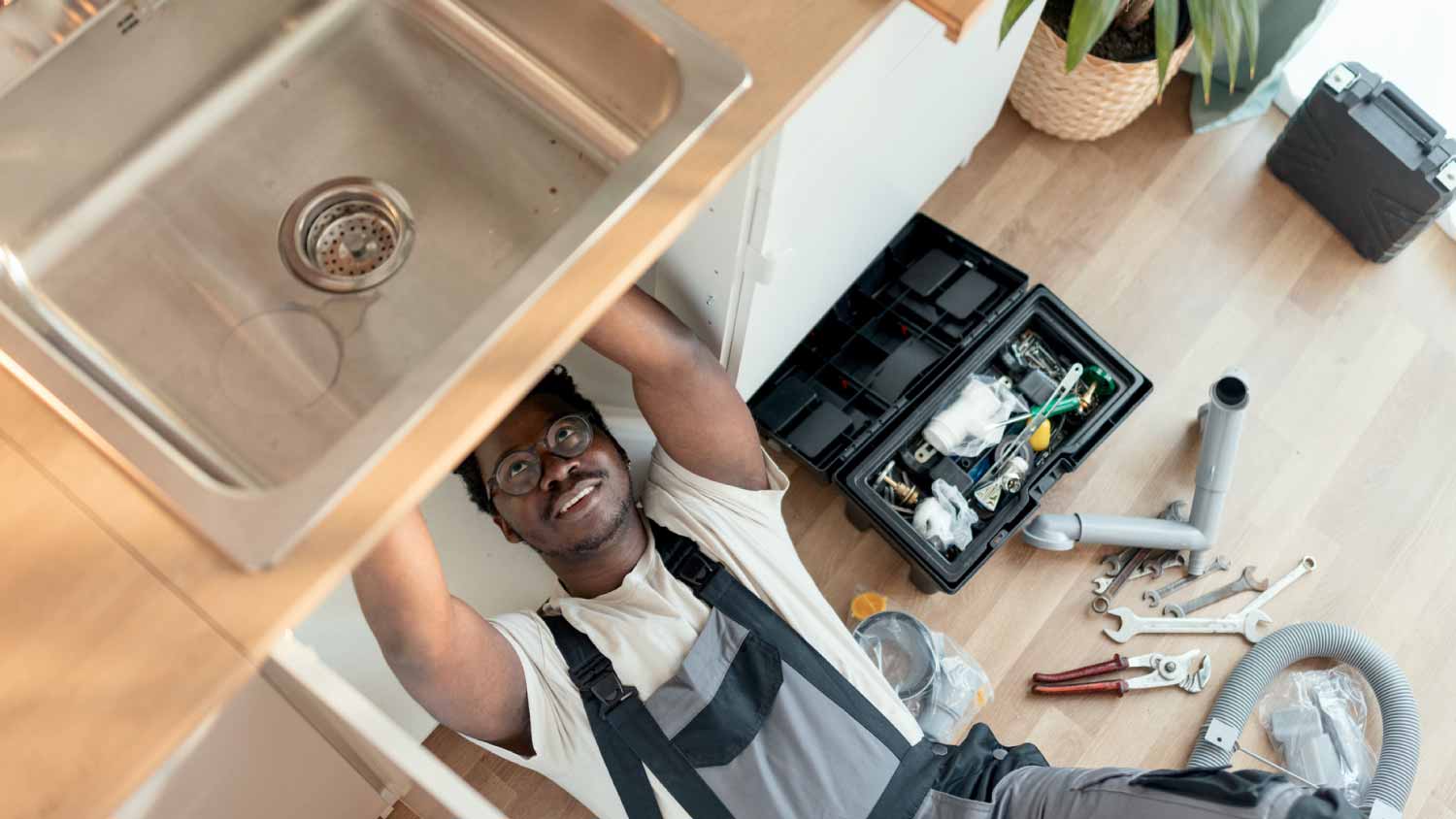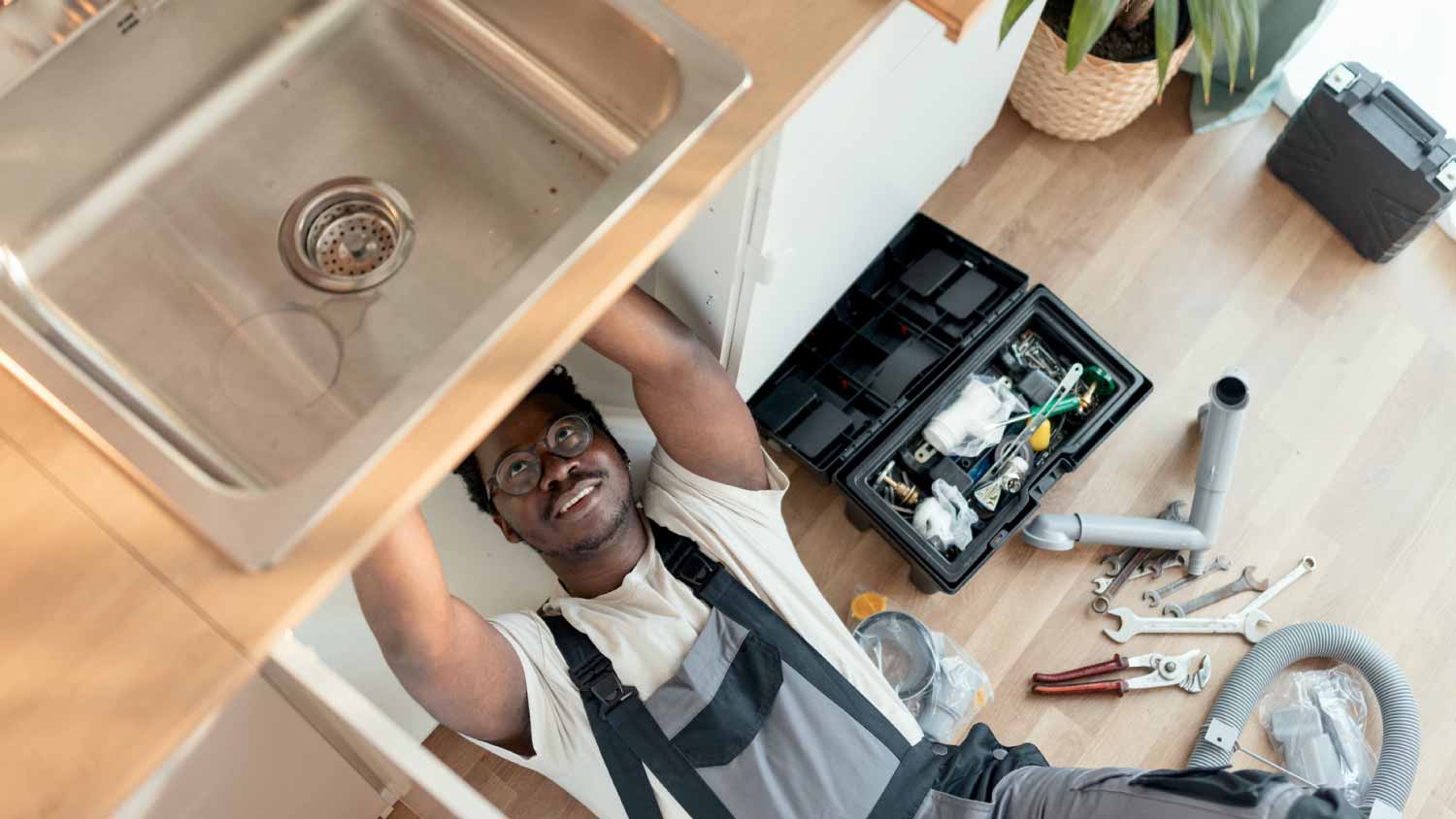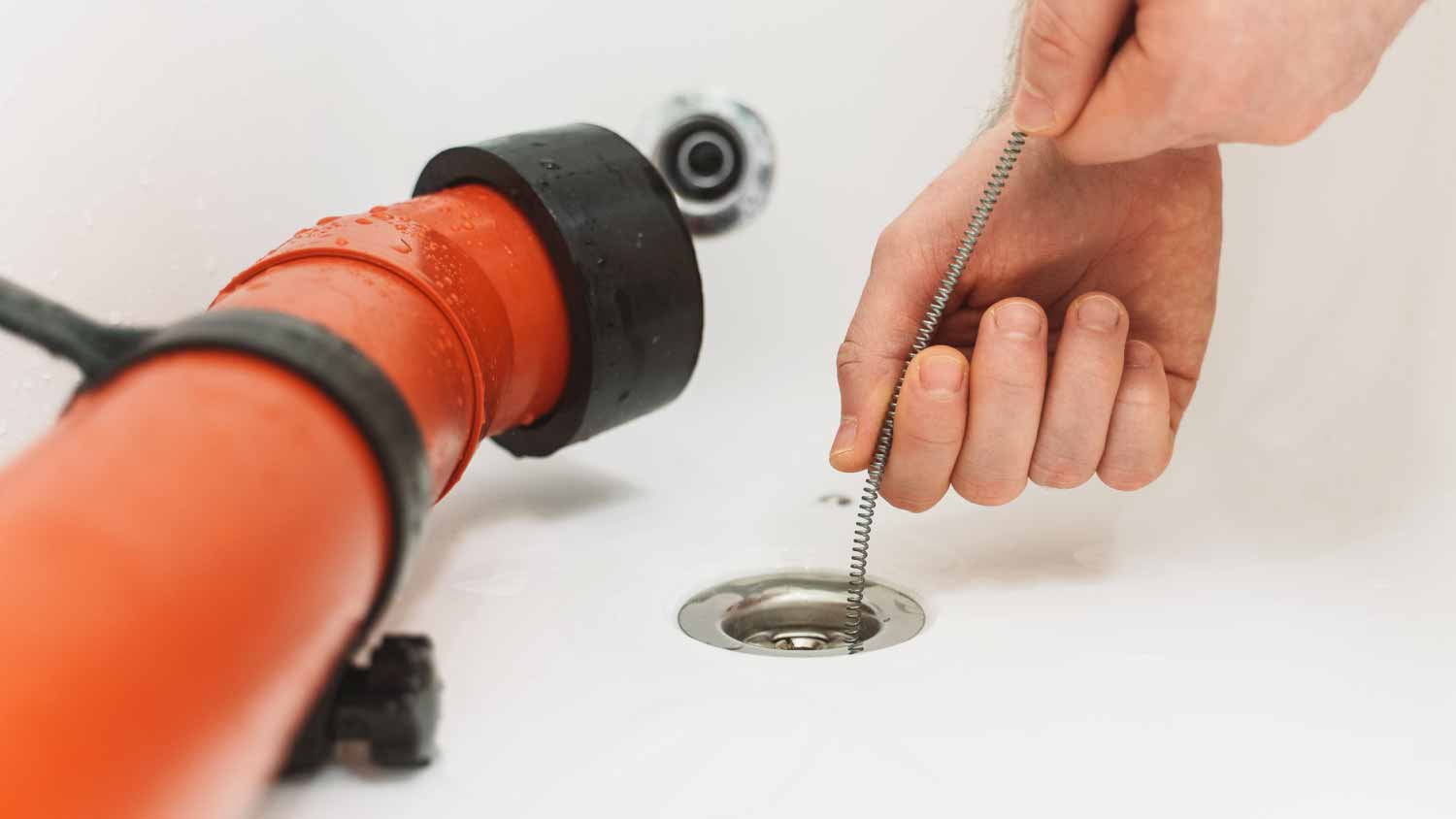Water issues can strike any home without warning, turning a peaceful day into a plumbing nightmare. It could be a sudden leak, mysterious dripping sounds, or a backed-up toilet; plumbing emergencies demand quick thinking and decisive action. As homeowners, understanding how to handle these situations can save thousands in property damage and spare you considerable stress. This guide offers practical advice for identifying, addressing, and preventing common plumbing disasters that could leave you in a tough situation—or worse, knee-deep in water.
Identifying and Responding to Household Plumbing Emergencies

- A plumber working efficiently to address an urgent plumbing emergency under the sink, illustrating immediate action in household plumbing crises. Source: angi.com
When a plumbing emergency occurs, the first crucial step is to shut off the water supply. For isolated issues like a leaking sink or toilet, locate and turn off the fixture’s dedicated shut-off valve. In more severe cases involving burst pipes or extensive leaking, immediately shut off your home’s main water valve, typically located near the water meter. This single action can prevent significant water damage while you assess the situation. After stopping the water flow, quickly document the damage with photos or videos—this evidence could prove invaluable for insurance claims later—and begin removing standing water using towels, mops, or a wet vacuum.
Knowing when to call a professional versus attempting DIY repairs can save both time and money. Simple issues like unclogging drains, fixing running toilets, or replacing a worn washer in a dripping faucet are generally manageable for homeowners with basic tools. However, more complex problems require professional attention. Call a licensed plumber immediately when facing burst pipes, sewage backups, no water throughout the house, or water heater failures. While waiting for professional help, perform temporary measures like applying pipe repair clamps or wrapping leaking joints with plumber’s tape to minimize damage. Remember that attempting complex repairs without proper knowledge can transform a fixable problem into a costly disaster.

- A snapshot of common plumbing issues that homeowners frequently encounter, serving as a visual checklist for awareness and troubleshooting. Source: angi.com
Common Plumbing Problems and Their Solutions
Low water pressure ranks among the most frustrating plumbing issues homeowners face. Before calling a professional, perform some troubleshooting: check if neighbors are experiencing similar problems, ensure your main water valve is fully open, and examine individual fixtures for clogged aerators. Often, removing and cleaning aerators can resolve fixture-specific pressure issues. For showerheads, soaking in vinegar overnight can dissolve mineral deposits. However, if pressure issues affect your entire home, more serious concerns might be at play—pipe corrosion, hidden leaks, or problems with your pressure regulator may require professional diagnosis to prevent further complications.

- Routine maintenance with a drain snake can help prevent clogs and ensure a well-functioning plumbing system. Source: angi.com
Leaky pipes and burst pipes represent plumbing emergencies that demand immediate attention. For minor leaks, temporary solutions include pipe repair clamps, epoxy putty, or plumber’s tape until professional help arrives. Burst pipes, which often result from freezing temperatures, excessive pressure, or aging plumbing systems, require immediate water shut-off followed by professional repair. The average cost for pipe leak repairs runs around $500, though prices vary based on accessibility and the extent of damage. Remember that ignoring even small leaks can lead to structural damage, mold growth, and rising water bills. Consistently increasing water costs without increased usage often signals hidden leaks requiring professional investigation with specialized equipment to locate and address before they cause significant damage.
Preventative Maintenance for Plumbing Systems

- Choosing the right professional plumbing service is vital for ensuring quality repairs and maintenance in your home. Source: anythingpossiblehandyman.com
Regular maintenance serves as your first line of defense against plumbing disasters. Establish a quarterly inspection routine to examine visible pipes under sinks, around water heaters, and in basements for signs of corrosion, moisture, or small leaks. Pay particular attention to pipe joints and connections, as these are common failure points. For drains, monthly preventative cleaning using a mixture of baking soda followed by vinegar can help prevent build-up without damaging pipes as chemical cleaners might. Additionally, installing mesh screens over drains captures hair and debris before they cause clogs, while being mindful about what goes down drains—avoiding grease, coffee grounds, and non-flushable items—significantly reduces emergency calls.
Water pressure monitoring represents an often overlooked aspect of plumbing maintenance. Excessive pressure can strain pipes and connections, eventually leading to leaks or failures. Consider installing an inexpensive pressure gauge on an outdoor spigot to periodically check your home’s water pressure—readings should typically fall between 40-60 psi. If consistently high, a pressure regulator installation might be necessary. Seasonal maintenance is equally important: disconnect and drain outdoor hoses before winter to prevent freezing, insulate exposed pipes in unheated areas, and consider professional drain cleaning annually to remove accumulations before they cause major blockages. For homes in areas with hard water, water softener maintenance helps prevent mineral build-up that restricts water flow and damages appliances over time.
Professional Plumbing Services
Selecting the right plumbing professional can mean the difference between a quick resolution and an ongoing hassle. Start by verifying credentials—legitimate plumbers should be licensed, insured, and willing to provide proof upon request. These qualifications protect you from liability and indicate proper training. Before hiring, request detailed estimates from multiple professionals, comparing not just price but also scope of work, materials used, and warranty offerings. Online reviews and recommendations from neighbors can provide valuable insights into reliability and quality of work. Remember that the lowest bid isn’t always the best value—experienced professionals may charge more but often deliver superior results with fewer future complications.
Understanding the cost structure of plumbing services helps prepare for emergency expenses. Standard service calls typically range from $75-150 during regular hours, but emergency after-hours service can triple these rates. When hiring a plumber, ask key questions: “How is your pricing structured—hourly or flat-rate?”, “Does your estimate include all materials and potential complications?”, “What warranty do you offer on parts and labor?”, and “How will you protect my property during repairs?” Get everything in writing before work begins, including a detailed scope, timeline expectations, and payment terms. Establishing a relationship with a reliable plumbing service before emergencies occur can provide peace of mind and potentially faster response when urgent situations arise, as many companies prioritize existing customers during high-demand periods.
